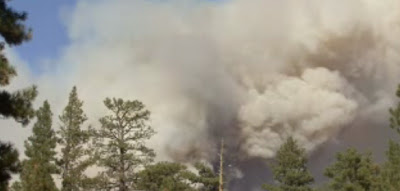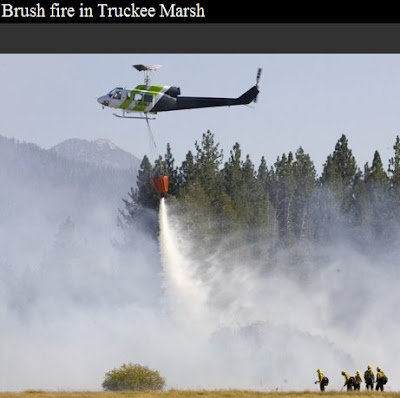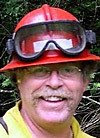From npca.org
Federal mismanagement of U.S. forests has increased the number, size and cost of wildfires over the past decade. Overcrowding has left 60 percent of national forest land facing abnormal fire hazards. The culprit: bureaucratic paralysis -- due in part to judges or politicians beholden to environmental lobbyists overriding the decisions of professional foresters, says the National Center for Policy Analysis (NCPA).
For instance:
- When a wildfire struck Storrie, Calif., in August 2000, more than 55,000 acres burned, including 28,000 acres in the Plumas National Forest, 27,000 acres in the Lassen National Forest and 3,200 acres of private forestland.
- Following the fire, only 181 of more than 28,000 acres in the Plumas National Forest were replanted; in the Lassen National Forest, only 1,206 acres were cleared and 230 acres replanted.
- By contrast, on the privately owned land, forest managers reduced wildfire by removing 30,633 tons of dry material, enough to fuel 3,600 homes for a year.
- They harvested enough larger dead trees to build 4,300 homes.
- They spent millions of dollars to reforest burned land and increase the number of different tree species.
Even though federal legislation has specifically allowed the forest service to log to reduce fire risk, environmentalists' lawsuits have delayed those plans. Instead, the government should introduce market competition in the management of the nation's forests, concludes NCPA.
Private forest owners and managers would have the incentive to minimize wildfires and improve forest health. Unhindered by bureaucratic federal rules, they would be better able to prevent and treat infestations that kill forests, says the NCPA
Oregon: Inquiry into escaped prescribed fire
From the Bend Bulletin:
U.S. Forest Service officials from Oregon and the regional office will begin investigating today why a prescribed fire outside of Camp Sherman burned out of control, jumping from a 31-acre planned burn Wednesday to the now-1,150-acre Wizard Fire.
“It’s obvious that things did not go as planned, so we’ll be conducting a review,” said Bill Anthony, district ranger for the Sisters Ranger District.
No one wants controlled burns to escape, he said, and fire managers with the Forest Service are concerned when one does.
“We’re going to step back and take a good, hard look at why this fire escaped our control,” Anthony said, “and come to an understanding about what procedures we need to change and fix.”
Agency officials said the problem didn’t stem from the burn itself, but from the monitoring period after the prescribed fire had burned down a bit.
“The first day after the burn the winds picked up, and we didn’t pick (the new fire) up during our patrol procedures, and it escaped,” Anthony said.
After controlled burns, staff are supposed to patrol or monitor the areas by walking or driving the perimeter of a fire.
“They survey the perimeter of the fire, look into it to make sure nothing is jeopardizing the ability to keep the burn within its perimeter,” Anthony said. “Something did not happen (after last week’s fire), and we have to figure out why.”
He said that he did not yet have the whole story about what had occurred during the patrol period, and would wait for the review, which will be conducted by people from the Forest Service’s Region 6 district office, which includes Washington and Oregon, other national forests in Oregon as well as local agency staffers, to discuss what did or didn’t happen and how to fix it.
















